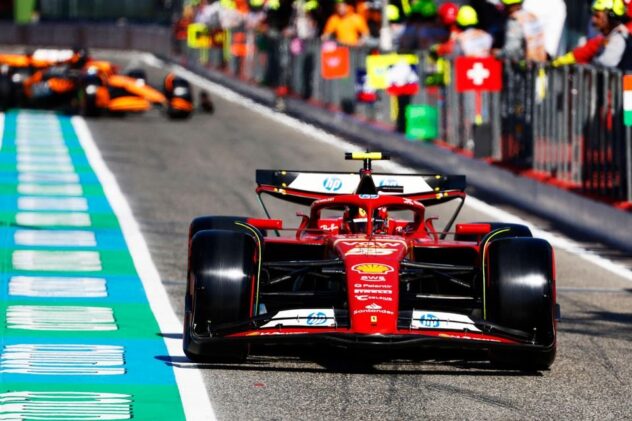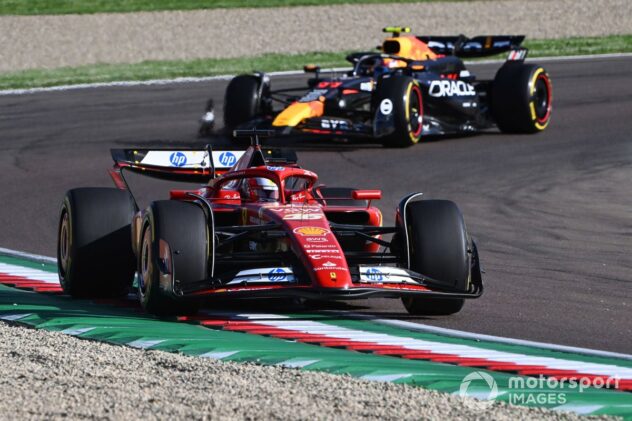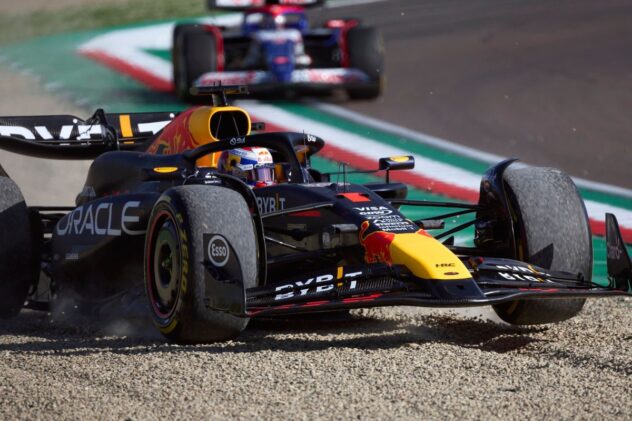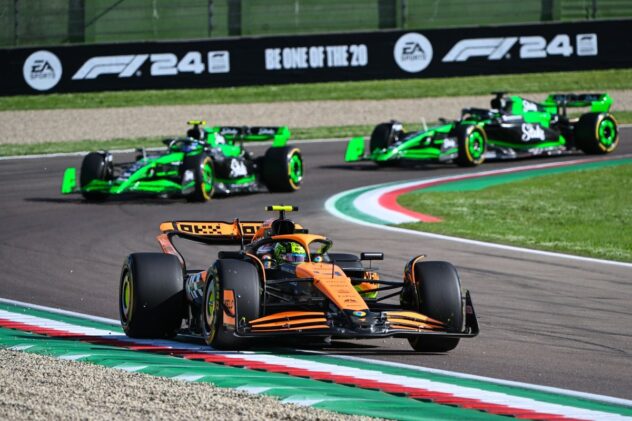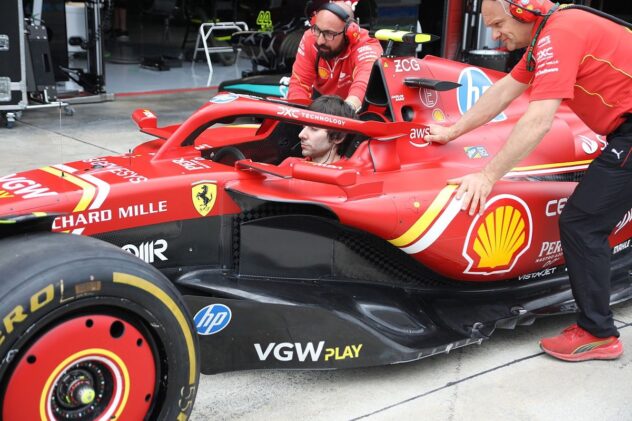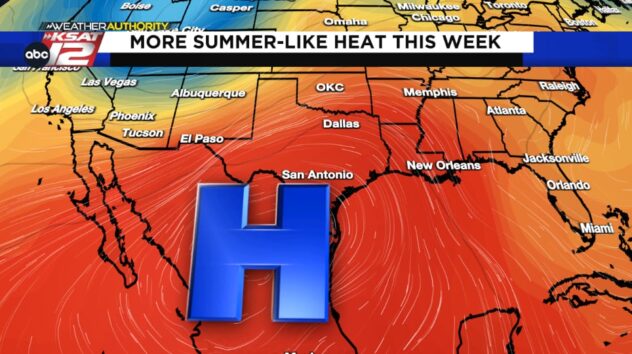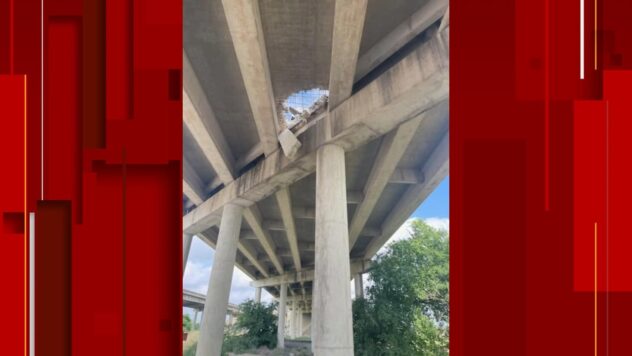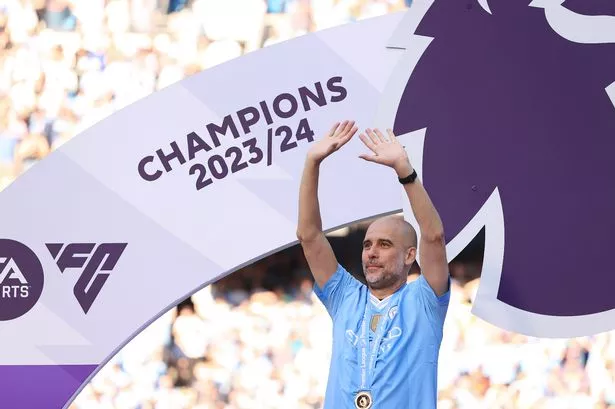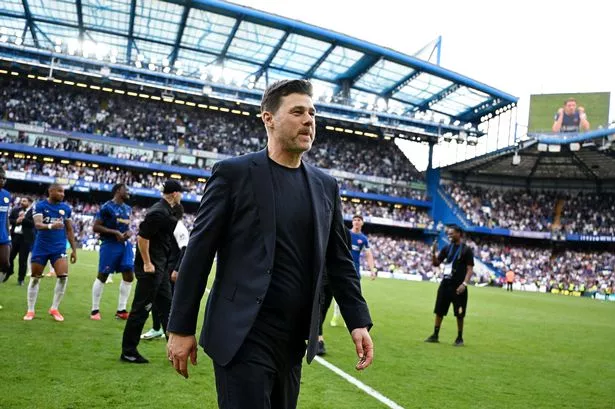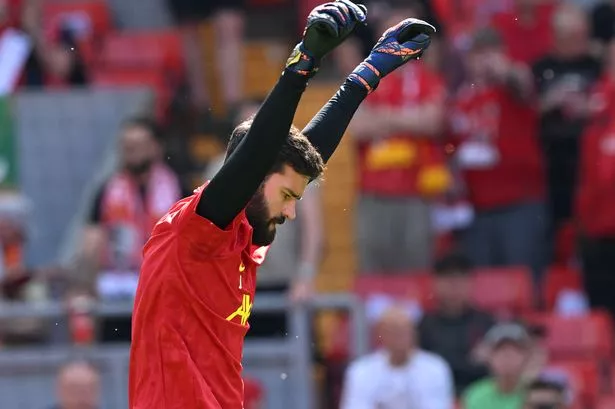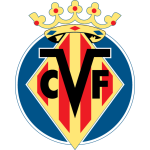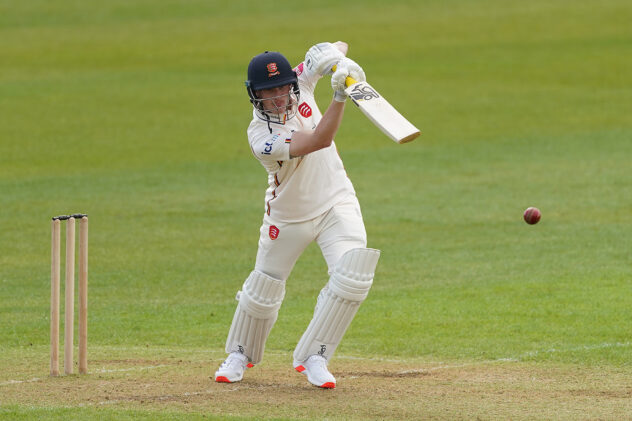The emails that highlight how far behind Williams is in F1

That’s perhaps not surprising given that for many years the team struggled to balance the books. Spending on equipment for the factory was not a priority compared to reaching the end of the season. It’s taken the arrival of Vowles, a man with so much intimate knowledge of how Mercedes operates, for the realisation to fully sink in in terms of just how far the team lags behind.
The good news is that this is a boom time for teams in terms of income and potential values, and owner Dorilton is well aware that it also needs to protect its investment by keeping up with the competition. Williams simply has to have state-of-the-art facilities, even if there are no potential plans to sell on the horizon.
The complication is that it takes time to plan and undertake infrastructure projects, and more importantly they now have to be conducted under the auspices of the cost cap. Even if you have the money and the willingness to re-equip the factory, there’s a hard limit on what you can allocate to capital expenditure each year.
That has become a point of debate in recent months as teams such as Williams, Alpine and Sauber – all of which reined in spending when times were tough – now seek to improve their facilities.
“Twenty years of underinvestment is why we are where we are today,” says Vowles. “But I’m in a fortunate position that my predecessors weren’t – where we have investment, significant investment, behind us.
“In fact, there is a strong desire to have Williams return back to a competitive position. But to do that requires investment. So the money’s available and ready. The cost cap itself is split into two things. There’s an operational cost cap, which is about $145m, which everyone knows and talks about.
“Perhaps more hidden than that, there is a CapEx, a capital expenditure version of the cost cap. That’s round about, it’s a bit complicated, but $36m spread across four years. But if you like, every year you can spend six or seven of that, if you just do it fairly equally.
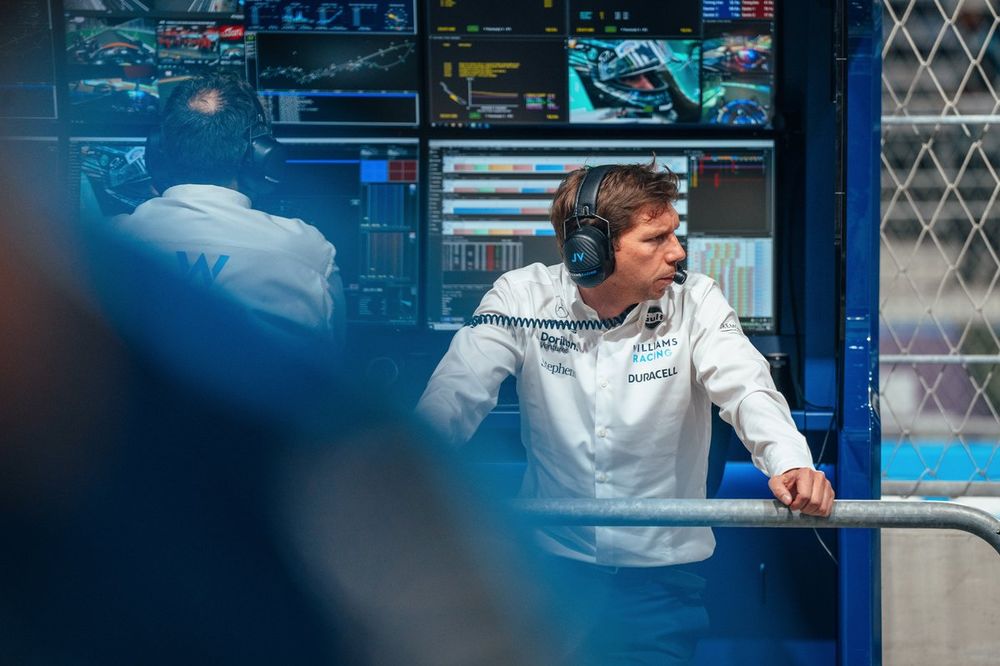
Vowles is under no illusion about the difficulty of the task facing Williams given its infrastructure deficit
Photo by: Williams
“That’s good in as much as it’s restricted down spending. But in many regards, where we are today, that money is disappearing on what I think is basic infrastructure.”
Vowles cites one key example of what is currently lacking at Williams.
“This is being very transparent about it,” he says. “When a designer releases a part, it sort of goes into a black hole. And then there’s emails going backwards and forwards between production to try and find out where their part is, how it’s being upgraded, how big it is, how long it will take.
“Normally, that would go into a digital system that can be tracked, so you understand actually, what does the car get made up of? And bear in mind, there are 17,000 components and by the time you have designers doing this 17,000 times, you get lost. So you have inefficiencies.
“That software to fix that isn’t, unfortunately, £100, but that’s millions, and even up to 10s of millions if you get it right. So, CapEx for me, at the moment, my expenditure was more spent on trying to get some infrastructure in place, so at least we know how long it takes to design a part.”
It’s abundantly clear that in the years leading up to the introduction of the cost cap and its associated CapEx limit, the teams that had plenty of resources saw which way the wind was blowing. They spent heavily on infrastructure projects precisely because they knew that the limits would make it harder to so from 2022 onwards.
Indeed, as Vowles notes, those numbers are available if you scan the annual financial reports of the teams and see where they were allocating their money in the two or three years before the cap was imposed.
“It’s all publicly available,” he says. “If you actually go look at Companies House [where the reports of UK businesses are logged], you can sort of see that the numbers we’re talking about here is hundreds of millions. Not 10 million, or 20 million, but hundreds of millions to sort of catch up with the level of investment, from where Williams is today, to perhaps the most extreme expenditures you see in the sport. That’s a big deficit.”

Williams wasn’t in a position where it could build up its infrastructure in advance of the cost cap as it struggled to remain afloat
Photo by: Mark Sutton / Motorsport Images
That’s why we are currently in the middle of a debate about an adjustment to the CapEx limit that’s designed to help Williams and other teams that fell behind in terms of infrastructure to catch up, with a decision set to be made over the Belgian Grand Prix weekend at the end of this month.
Exactly how the extra allowance will work is not yet clear, but there’s a precedent in that wind tunnels were taken out of the main cap and teams were given a $55m allowance should they decide to build a new one. Aston Martin and McLaren opted to do just that, and the others have the opportunity to play their joker in the coming years – although they still have to have that money available and be able to justify abandoning their old tunnels.
The Catch 22 is that the extra CapEx allowance to help teams to catch up will also go to the established frontrunners – but the theory is that they already pretty much have what they need, and any new equipment they invest in now will represent marginal gains relative to what the likes of Williams, Alpine and Sauber can achieve with better equipment.
“F1, the FIA and other teams have been supportive in this,” says Vowles. “What we’re looking for at the moment is the ability to have sporting equity, the ability to have infrastructure that matches our peers, such that we’re not fighting with one hand behind our back, but fighting in the same way as other people are.
“For us, certainly where we are at the moment the numbers aren’t small. In fact, they’re scarily large, and what we would have to spend on the site and on infrastructure. The site’s OK, that’s actually external to the cost cap, interestingly enough. But on machines, for example, or simulators, or the software I was talking about here, or your composites facilities, and I can give you a list – there is a list, in fact.
“What we’re looking for is the ability to show where we are today, where the benchmark is, and the ability to spend in order to catch back up to that benchmark.”
Vowles makes it clear that the example he cited earlier is top of the list and would immediately make a difference to how effectively the team operates.
“The key one is the one I brought up here,” he says. “Which is if you don’t have a digital infrastructure, where you know where a part is, how long it takes, how many parts you need, what is an assembly built up of, you are lost from the beginning. And, actually, I think that’s an accolade to what Williams was, because you need a huge amount of teamwork in order to understand what you’re doing with this.

Inefficiencies in the design process will take time to resolve and have an impact on car design
Photo by: Andy Hone / Motorsport Images
“I would describe it as human glue, but very good human glue. And that’s what was in place. And that infrastructure will really make a difference. Because just understanding how long it would take to produce something could be a tremendous improvement over where we are today.
“And also means you can start planning properly in the future for your updates what you want, and where you’re going to.”
That’s why the system Vowles is talking about is so important – an efficient and effective flow of updates from the design office to the track is an absolutely fundamental element of F1 success these days.
“What’s very clear is that our competitors are bringing tremendous amounts of performance to the car quicker than we’re bringing it to the car,” says Vowles. “We have to address that, and improve that.
“Very clearly as well, the car has some characteristics where it works well at some tracks, and at others it’s quite poor. We’ve got to really start addressing that through some base fundamentals. So I would say all areas of the organisation have targets for how we’re going to improve, and all will deliver performance if we can get them right.”
As Vowles hinted, the fact that Williams is operating at a respectable level despite the vital missing infrastructure indicates that it is already getting the fundamentals right. It just needs the extra tools to make everything just that more effective.
“First of all, team spirit was high,” he says of his first impressions on arrival. “Given that they had gone through what I think was an incredibly difficult winter, when there was large change at all management levels, and to a certain extent, a lack of leadership at that point, as well.
“But the morale was high and in fact the build that they did, without much structure around it, was very impressive. I mean, I’ve quoted it before in the media, but 17,000 components coming together, and the thing has four wheels pointing the right way is impressive.
“There’s definitely a sentiment now, I’ve described it as you can see people’s heads are held high, the shoulders are up, they can see a direction of travel for how we’re going to pull ourselves out of this, which is not the same as going round in a circle.”
What Vowles is helping to install in the camp is proper long-term planning, which was perhaps missing in previous years.
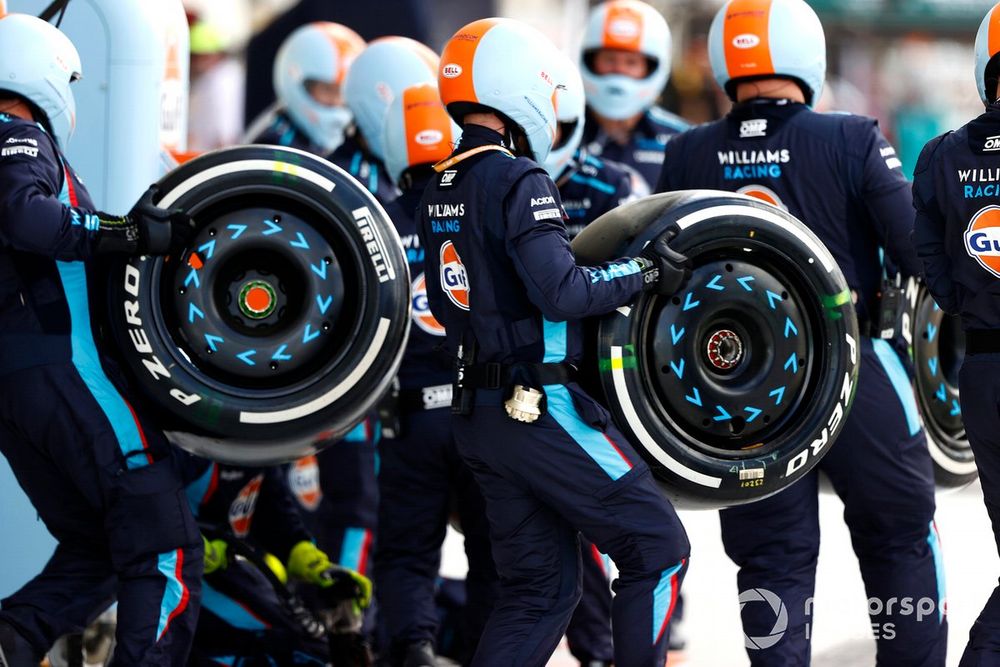
Morale in the team remains high despite its difficult situation, Vowles maintains
Photo by: Andy Hone / Motorsport Images
It’s especially essential now with a significant change of technical regulations coming in a couple of years. For example, henceforth most teams will need more advanced transmission dynos simply because gearboxes will have to work harder when mated to the 2026 power units. That’s a piece of kit that you need to order sooner rather than later.
“The best way to describe it is that the team was in a survival mode,” he says. “Where what it was thinking about was what do we need to do get ready for the next race to go forward? That’s not how F1 works anymore.
“What you’re thinking about now, already, is 2024, 2025 and 2026. And if you’re not thinking that far ahead, you’re going to fall behind against competitors that are. And that cultural change will take quite a while to properly kick in because it’s very different.
“You’re now not thinking about the carbon bits appearing in Montreal, but you’re thinking about what do you want the car to look like in two years’ time? And I think that’s the direction of travel that’s helped everyone understand how we are going to pull ourselves out of the performance region we are today.”
As Vowles notes, the “human glue” is as important as the hardware and systems in the factory. Thus getting everyone on the same page is as important a part of his job as signing off on investment projects.
“I think there’s an expression, it’s not mine, that culture eats strategy for breakfast,” he says. “And I completely buy into that. You can have as many strategies as you want but your culture is actually what dominates the drum beat of the organisation. And your culture is everything.
“Openness, communication, teamwork, all of those cultures I strongly believe in. They don’t appear overnight, just because I say this is the culture I’d like. In fact, culture comes from your organisation. All you can do is mimic behaviours that you want out of it, and reward your lieutenants that effectively follow the guise of where you want to go.
“But culture is everything. If you look at what we have, there’s fundamentally up and down the grid, each team has between 800 to 1,000 incredibly intelligent individuals working day and night in order to produce a car that moves forward. Now you need to start finding your differentiators and your differentiators come from just those that are slightly better at talking, communicating and working together. And that’s what culture drives.”

Albon scored points in Canada, his seventh position the fruit of intensive efforts to bring upgrades to Montreal
Photo by: Andy Hone / Motorsport Images

